^
Births
which occurred on a 10 June:
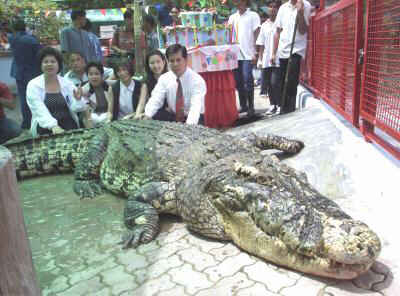 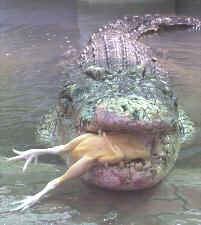 ^ ^
1972 Chai Yai, crocodile.
It would grow to become, by its 28th birthday, according to the Guiness
book of World Records, the world's largest captive crocodile, at 6
m in length, and 1114 kg. Officials from the Samutprakarn crocodile
zoo pose next to Chai Yai on its 28th birthday. The crocodile celebrated
its birthday with a feast of whole chickens and fish.
|
1983 The Presbyterian Church (USA) is formed in Atlanta,
through a reunification of the United Presbyterian Church (UPCUSA) and the
Southern Presbyterian Church (PCUS)
1953 John Edwards,
US senator from North Carolina since 1999, candidate since 2003 for the
2004 Democratic nomination for US President.
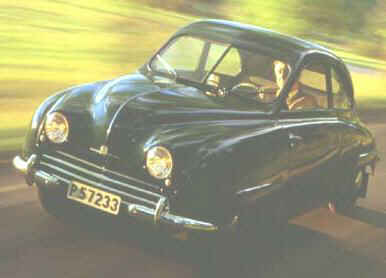 1947
Saab Model 92, its first car ^top^ 1947
Saab Model 92, its first car ^top^
Saab introduces its first car, the
model 92 prototype. [photo: the 1950 Saab Model 92]. Saab
had been primarily a supplier of military aircraft before and during
World War II, but with the end of the war, company executives realized
the need to diversify the company’s production capabilities. After
an exhaustive planning campaign that at one point led to the suggestion
that Saab manufacture toasters, company executives decided to start
building motor cars.
Saab director
Sven Otterbeck placed aircraft engineer Gunnar Ljungstrom in charge
of creating the company’s first car. Ljungstrom sketched his ideas
for an aerodynamic, light-framed, and safe automobile, and then enlisted
the skills of noted industrial designer Sixten Sason to translate
the sketches into an automobile ready for production.
In search of a name for their new car, Saab executives elected to
stay with their existing numbering system: Model numbers 1 through
89 were taken up by military aviation projects, and 90 and 91 by commercial
aircraft projects, so the first Saab automobile became the "Model
92." The numbering system wasn’t the only idea Saab executives held
on to: All Model 92s came in Saab’s standard color, aircraft green.
While the prototype Model 92s ran with
German-engineered DKW engines, the Saab engine was ready in the summer
of 1947. The car received rave reviews from the Swedish press after
its unveiling, although the first 92s didn’t hit Swedish showrooms
until December of 1949.
The Model
92 came equipped with a two-cylinder, two-stroke, twenty-five horsepower
engine that propelled the Saab at a top speed of 100 km/h. After only
a month of production Saab began its distinguished history of rally-car
racing, entering the 92 in the Monte Carlo Rally. Saab’s durability,
handling, and mid-range acceleration lent themselves to the arduous,
off-road nature of rally racing, and Saab cars proved to be a force
in the world of rally car racing between 1950 and 1980, and again
in 1996, after a sixteen-year hiatus from the circuit. |
^
1935 Alcoholics
Anonymous is founded. ^top^
In Akron, Ohio, two recovering alcoholics,
Dr Robert Smith, an Akron surgeon. and William Wilson, a New York
stockbroker, found
Alcoholics Anonymous (AA), a twelve-step rehabilitation program
that would help countless people cope with alcoholism. Based on psychological
techniques that have long been used in suppressing dangerous personality
traits, members of the strictly anonymous organization control their
addictions through guided group discussion and confession, reliance
on a "higher power," and a gradual return to sobriety. The organization
functions through local groups that have no formal rules besides anonymity,
no officers, and no dues. Anyone with a drinking problem qualifies
for membership. By the end of the century , there would be over 80'000
local groups in the United States, with an estimated membership of
almost two million people. Other addiction support groups patterned
on AA include Narcotics Anonymous and Gamblers Anonymous. |
1933 F. Lee Bailey, attorney.
1925 The United
Church of Canada is formed, uniting both the Methodist and Presbyterian
denominations of Canada. The merger also took in 3000 independent Canadian
Congregational churches.
1921 Prince Philip Mountbatten,
Greece, Duke of Edinburgh, Mr. Elizabeth II
1904 John
Greenlees “ Jack” Semple, Northern Ireland mathematician
who died on 23 October 1985. He worked on various aspects of geometry, in
particular on Cremona transformations and on extending results of Severi
[13 Apr 1879 – 08 Dec 1961].
1895 Immanuel Velikovsky,
Belarus-born US writer who died on 17 November 1979. After examining legends
of the ancient Jews and other eastern Mediterranean peoples, he concluded
that some tales described actual occurrences and were not mere myths or
allegories. In the United States from 1939, he expanded the geographic scope
of his study of ancient documents. In his first book, Worlds in Collision
(1950), he hypothesized that in historical times an electromagnetic derangement
of the solar system caused Venus and Mars to approach the Earth closely,
disturbing its rotation, axis inclination, and magnetic field. His later
works are Ages in Chaos (1952), revising the chronology of the
pre-Christian Middle East; Earth in Upheaval (1955), adducing geologic
and paleontological evidence supporting his belief that catastrophes have
overwhelmed the Earth; Oedipus and Akhnaton (1960), linking Egyptian
history with Greek mythology; and Peoples of the Sea (1977), identifying
Ramses III with Nectanebo, pharaohs otherwise dated 800 years apart.
1887 Vladimir
Ivanovich Smirnov, Russian mathematician who died on 11 February
1974.
1880 André Derain, French Fauvist painter
and sculptor who died on 10 September 1954. — MORE
ON DERAIN AT ART “4” JUNE with
links to images.
1878 Tranquillo Cremona, Lombard painter
born on 10 April 1837 — more
1861 Pierre
Maurice Marie Duhem, French mathematical physicist who died
on 14 September 1916..
1859 James Guthrie, British
painter who died in 1930. — MORE
ON GUTHRIE AT ART “4” JUNE
with links to images.
1857 Ed Henry Potthast, US
Impressionist
painter who died on 10 March 1927. — MORE
ON POTTHAST AT ART “4” JUNE
with links to images.
1853 Claude Thomas Stanfield Moore,
British artist who died on 02 April 1901.
1845 Jean Joseph
Benjamin-Constant, French painter who died on 26 May 1902, constantly
interested in Orientalism.
— MORE
ON CONSTANT AT ART “4” JUNE
with links to images.
^
1839 (or 01 March 1837?) Ion Creanga,
Romanian fairy tale author (Memories from childhood = "Amintiri
din copilarie"), author of (in English translations): MEMORIES
OF MY BOYHOOD, STORIES AND TALES. — Tales and Stories [13 Romanian
folk tales]— Recollections from Childhood.
"I
am born at 1 March 1837 in Humulesti village, Neamt county, from Romanian
parents: Stefan of Petrea the shoemaker and his wife Smaranda, born
David Creanga, from Pipirig village, Neamt county..." The date written
by Creanga's hand in Fragment de biografie (Biopraphy Fragment) and
accepted by many literary historians is contested by other researchers,
which affirm that the writer was born, on June 10 1839, as the only
authentic document: a register of new-borns from Humulesti, descovered
and published by Gh. Ungureanu, archievist from Iasi.
http://www.cri.md/Literatura/creanga.html
Ion
Creanga s-a nascut la 10 iunie 1839 in satul Humulesti.
^top^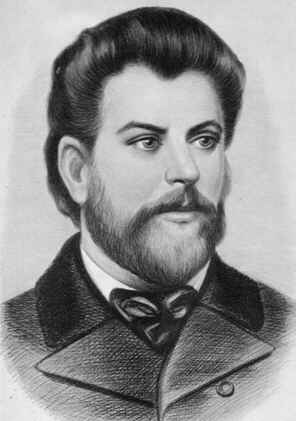
Intre 1846-1855 urmeaza scoala din
Humulesti, dupa care invata la Brosteni, apoi la Tirgu-Neamt si
la scoala de catiheti din Falticeni.
Intre 1855-1858 urmeaza seminarul
de la Socola –cursul inferior, dupa care se inscrie la Facultatea
de Teologie a Universitatii din Iasi, dar nu o frecventeaza.
In 1875 il cunoaste pe Mihaai Eminescu.
Devin buni prieteni. Eminescu il introduce la societatea literara
“Junimea” si-l ajuta sa debuteze in “Convorbiri literare” (Soacra
cu trei nuroi, 1 octombrie 1875), unde va publica pina in 1878
si celelalte povesti.
In 1881-1882 publica primele trei
parti din Amintiri din copilarie, a patra fiind postuma.
In aceeasi perioada cu Eminescu,
Creanga este grav bolnav si se stinge din viata la 31 decembrie
1889.
Opera lui Creanga este epopeea poporului
roman. Creanga este Homer al nostru.
(G. Ibraileanu)
Ion Creanga este unul din marii clasici ai literaturii romane care
s-au afirmat in cercul literar “Junimea”, in a II jum. a sec.al
XIX-lea. E un scriitor realist, unul dintre cei mai cunoscuti si
mai iubiti. El a reusit sa ridice proza romaneasca din secolul trecut
pe aceleasi culmi pe care Eminescu propulsase limba literara in
poezie, valorificind vorbirea omului simplu si ridicind-o la un
nivel neegalat pina astazi.
Despre cel mai mare povestitor al
romanilor, Ion Creanga, care ii urmeaza lui Ion Neculce, s-a spus
ca a intrat in literatura cu un substantial fond sufletesc si intelectual
de sorginte populara. In acest sens, G.Calinescu afirma ca, scriitorul
moldovean reprezinta “poporul roman insusi, surprins intr-un moment
de geniala expansiune”. “In Creanga traiesc credintele, cresurile,
datinile, obiceiurile, limba, poezia, morala, filosofia poporului”-
scria G.Ibraileanu. Izvorul principal al operelor sale este folclorul
romanesc.
Ion Creanga creaza o opera extrem
de unitara sub raportul continutului si al mijloacelor artistice,
o opera care este alcatuita din:
Povesti – Punguta cu 2 bani, Soacra cu trei nurori, Povestea
porcului, Harap-Alb, Capra cu trei iezi, Danila Prepeleac, Fata
babei si fata mosneagului, Ivan Turbinca, Povestea unui om lenes,
Fat Frumos fiul iepei etc.
Povestiri – Inul si cinepa, Cinci piini, Mos Ion Roata si
Unirea, Mos Ion Roata si Cuza-Voda, Acul si barasul, Prostia omeneasca
etc.
Nuvela – Mos Nichifor Cotcariul
Romanul – Amintiri din copilarie.
After Soacra cu trei nurori
(published in 1875, October 1), Creanga publishes
in Convorbiri literare: Punguta cu doi bani, Danila Prepeleac,
Povestea porcului, Mos Nechifor Cotcariul, Povestea lui Harap-Alb,
Fata babei si fata mosneagului, Ivan Turbinca, Poveste unui om lenes,
Amintiri din copilarie (primele trei parti, a patra fiind postuma),
Popa Duhu, Cinci pâni. He writes also now, Mos Ion Roata
and Mos Ion Roata si Voda Cuza, Indemnul de a scrie i-a venit
din partea bunului sau prieten M.Eminescu.
In toamna anului 1875 Creanga citeste
la “Junimea” povestirea Soacra cu trei nurori, care apare
in revista Convorbiri literare, din octombrie: ”Ce fericita
achizitie pentru societatea noastra acea figura taraneasca si primitiva
a lui Creanga” - exclama Iacob Negruzzi – redactorul revistei.
Fiind “toba de anecdote”, el avea
totdeauna pregatita cite o “corsiva” pentru junimistii care se amuzau
copios, hazul lor facind “sa se cutremure peretii”. Risul lui inveselea
toata societatea, cind aducea cite o poveste sau novela, sau cite
un capitol din Amintirile sale…
“Cu cita placere si haz ascultam
sanatoasele produceri ale acestui talent primitiv” noteaza entuziasmat
I. Negruzzi, recunoscind in Ion Creanga un geniu naiv care a exercitat
o mare putere de atractie asupra spiretelor complicate ale scriitorilor
vremii.
Plecind de la folclor, Creanga a
reusit sa ridice proza romaneasca pe culmi nebanuite. Valorificind
limba omului simplu, el o ridica la un nivel artistic neegalat,
dovedindu-se un artist profund original.
Creanga died on 31 December 1889.
Au trecut si uneori au revenit Ion
Creanga, Mihail Sadoveanu, Nicolae Labis, Anton Holban, Teodor Stefanelli.
Unii dintre cei amintiti s-au întors spre vesnica odihna, la Falticeni.
Orasul pastreaza în memoria afectiva
si nu numai, pasii tuturor celor care l-au strabatut, l-au iubit
si de ce nu, l-au proiectat în nemurire. Fiecare strada îsi are
amintirile sale, dar cea care respira istorie la fiecare pas este
ulita Radasenilor, actuala strada Ion Creanga. Aici a functionat
celebra Scoala de catiheti unde "a patimit" Ion Creanga si tot aici
a fiintat si Scoala domneasca ctitorita în 1842 de Neofit Scriban.
Amintirile din copilarie ale lui Creanga evoca parfumul
si oamenii locului. http://home.dntis.ro/~primfalt/
Sources: http://www.faptudivers.com/almanah/Literatura_si_Arta.htm
— http://www.faptudivers.com/almanah/Literatura%20si%20Arta.htm
— http://www.ici.ro/romania/culture/l_creanga.html — www.nsc.ru/folk/romania/humanfolly.htm
CREANGA ONLINE:
Capra
cu trei iezi (BMP, ZIP, 108 Kb) — Cinci
pîni (HTML, 13 Kb) — Danila
Prepeleac (HTML, 33 Kb) — Fata
babei si fata mosneagului (HTML, 18 Kb) — Harap-Alb
(BMP, ZIP, 731 Kb) — Mos
Ion Roatã (HTML, 12 Kb) — (BMP, ZIP, 78 Kb) — Mos
Nechifor Cotcariul (GIF, ZIP, 275 Kb) — Popa
Duhu (HTML, 17 Kb) — Poveste
(HTML, 12 Kb) — Povestea
lui Stan Patitul (BMP, ZIP, 300 Kb) — Povestea
porcului (HTML, 39 Kb) — Povestea
unui om lenes (HTML, 8 Kb) — Punguta
cu doi bani (HTML, 15 Kb) — Soacra
cu trei nurori (HTML, 21 Kb) |
1819 Jean-Désiré-Gustave Courbet, leading
French realist painter who died on 31 December 1877. — MORE
ON COURBET AT ART “4” JUNE
with links to images.
1816 Johann
Georg Rosenhain, Prussian mathematician and revolutionary who
died on 14 May 1887.
1805 Victor Baltard, architecte
français qui mourut le 13 janvier 1874, fils de l'architecte et dessinateur
Louis-Pierre Baltard [1764 – 22 Jan 1846]. Reprenant les idées d’Hector
Horeau [1801-1872], il édifia en fer et fonte, selon la volonté de Napoléon
III, les
Halles centrales de Paris dont la construction commencée en 1851 fut
terminée en 1857. Il a également construit en 1861 l’église
St-Augustin, 46 boulevard Malesherbes, où il a su utiliser la
contrainte d'un terrain triangulaire ingrat. Son plan ingénieux organise
l'église en une large nef bordée de chapelles qui s'élargissent progressivement.
Elles aboutissent au chœur surmonté de la grande coupole qui lui donne sa
silhouette caractéristique. L'utilisation du fer permit d'élever la grande
coupole à 50 m. La pierre qui couvre l'armature de métal ne sert pas à soutenir
l'édifice mais seulement à la décoration. L'intérieur est caractérisé par
l'utilisation décorative de la structure métallique, ce qui était très moderne.
Par exemple, la voûte de la nef repose sur des arcs en métal ciselé apparents.
Les autres éléments de décoration sont romans, gothiques, Renaissance et
néo-byzantins, mélanges typiques de l'éclectisme de la fin du 19è siècle.
1798 Frederick Richard Lee, English painter who died on
04 June 1879. — links
to images.
1787 George Henry Harlow, British painter
who died on 04 February 1819. — MORE
ON HARLOW AT ART “4” JUNE
with links to images.
1557 Leandro dal Ponte Bassano, Italian
Mannerist
painter who died on 15 April 1622. — MORE
ON BASSANO AT ART “4” JUNE
with links to images.
0940 Mohammad
Abu'l-Wafa al-Buzjani, Persian mathematician and astronomer
who died on 15 July 998.
|
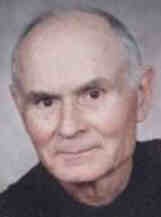



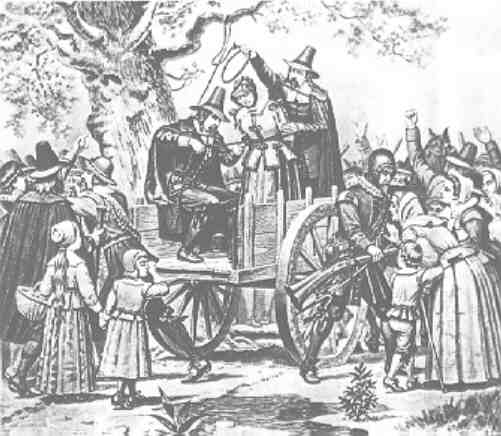 1692
1692

 1947
1947